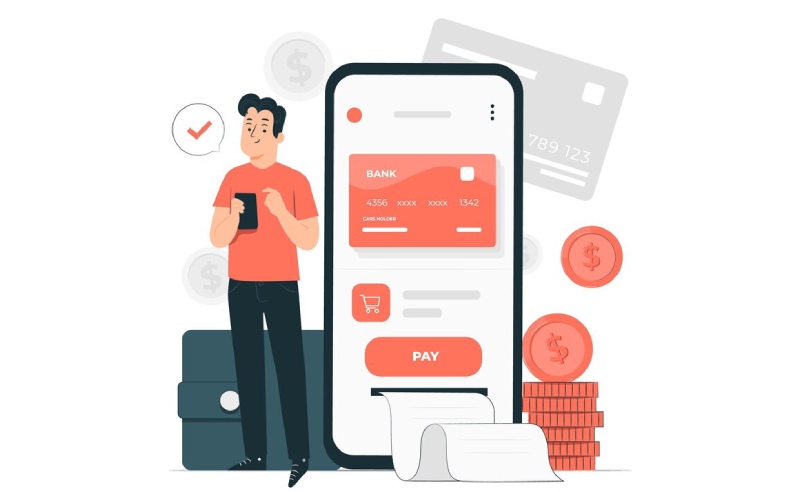In a fast-paced business world, manual payment processes create financial strain and inefficiencies. Choosing a B2B payment solution can alleviate these issues and provide several significant benefits.

B2B payment automation offers several tangible benefits for businesses, ranging from cost savings to curbing fraud and cashing in on early payment discounts. Learn more about the impact of automated invoice processing on your business and how to select the best system for your needs.
Table of Contents
Reduced Risk of Errors
Manual processing can be prone to errors, resulting in costly delays and costs. B2B payment automation software reduces the risk of errors by automating data entry and matching payments to invoices. It also provides a digital trail that can help mitigate fraud and mishandled funds.
The right AP automation solution allows your AP team to take control of the process by centralizing it through common workflows. This streamlines the approval process and allows AP teams to focus on valuable tasks like improving vendor relationships, identifying cost savings opportunities, and cashing in on early-payment discounts.
It also helps your AP teams avoid errors from manually comparing invoices, POs, and receipts and matching GL codes to the correct vendor. This can be extremely difficult and time-consuming without an automated system.
Moreover, a good AP automation software solution with a three-way match and a digital audit trail can reduce the time it takes to approve invoices. Using an intelligent AP automation partner can cut your average payment processing time from weeks to days or even hours.
You can have a faster quarter-end close and reduce the number of errors in your AP records, leading to less stress, increased accuracy, and better productivity across your entire organization.
Better Visibility into Your Spending
Manual payment processing can bog down your accounts payable workflow, but it doesn’t have to. Using an automated B2B payments system, you can eliminate bottlenecks while achieving superior visibility into your spending.
This is especially valuable for companies that operate on a tight margin and must optimize their cash flow. The faster you make supplier payments, the more you can invest in new projects or fund other business initiatives. Automating your payments can also help you reduce AP expenses.
For example, implementing a zero-paper approach can save money on printing supplies and postage costs. Also, by storing data digitally rather than in hard-copy files, you can lower your expenses for storing and maintaining records.
Moreover, by integrating an automated AP system with your accounting software, you can easily reconcile payments and track their status. This makes it easy to identify discrepancies and ensures that each invoice has been paid. Additionally, many vendors offer incentives for paying on time.
You can automatically take advantage of these discounts by enabling automation without manually tracking your invoices or chasing down senior colleagues for approval. Lastly, you can significantly improve employee morale by removing the need for manual tracking and records management.
Instead of worrying about chasing down senior executives for invoice approvals or spending hours reconciling payments, employees can focus on strategic tasks that will drive business growth.
Greater Control over Your Payments
Streamline your AP processes by allowing invoices to be paid online, on time, and in full. You’ll save time on data entry and the two-way matching process while minimizing manual error, making for more efficient invoice processing and creating a better working relationship with your partners.
You’ll also be able to take advantage of early payment discounts, a cost-effective way to help your business grow while building a mutually beneficial relationship with vendors. Ensure that the B2B payment automation solution you choose is fully integrated with your enterprise resource planning (ERP) system to eliminate the need for manual data transfer between systems.
Also, look for a solution that offers robust reporting capabilities that display payment status in real-time and provide a detailed history of each transaction. Lastly, opt for a service that can support international payments, reduce the days it takes to clear invoices, and create a frictionless payment journey for your clients. With the right solution, AP teams will no longer need to spend time sifting through paper records or waiting for approvals, resulting in a faster and more accurate quarter-end close.
Plus, they’ll have the peace of mind of knowing that their accounts payable department is safeguarding sensitive financial data. And, since payments go through multiple entities before funds are released, any errors will be caught and corrected immediately.
Enhanced Security
B2B payments can be made using cash, checks, ACH, virtual cards, or wire transfers. When these payments are made manually, it requires a lot of human touchpoints to complete them, which can lead to errors that slow down the entire payment process.
This is where payment automation software can come in handy. Streamlining the AP process eliminates these errors, which saves your team time and money. The right solution can also help reduce costs by automating tasks like matching invoices with payments, capturing early-payment discounts, and improving supplier relationships by keeping payment records accurate.
Lastly, the right B2B payment automation solution will allow you to create customized approval workflows for different AP employees. This will help you mitigate internal fraud by ensuring no single employee can access the company’s financial systems and creating a digital trail of all AP activities. You can make better decisions by eliminating manual processes and enhancing your business’s AP department.
Be sure to deploy a scalable solution that fits well with your existing system and offers enterprise-level security. With these benefits, your AP team can focus on the more strategic and rewarding parts of their job while improving cash flow, building stronger vendor relationships, and capitalizing on cost savings.